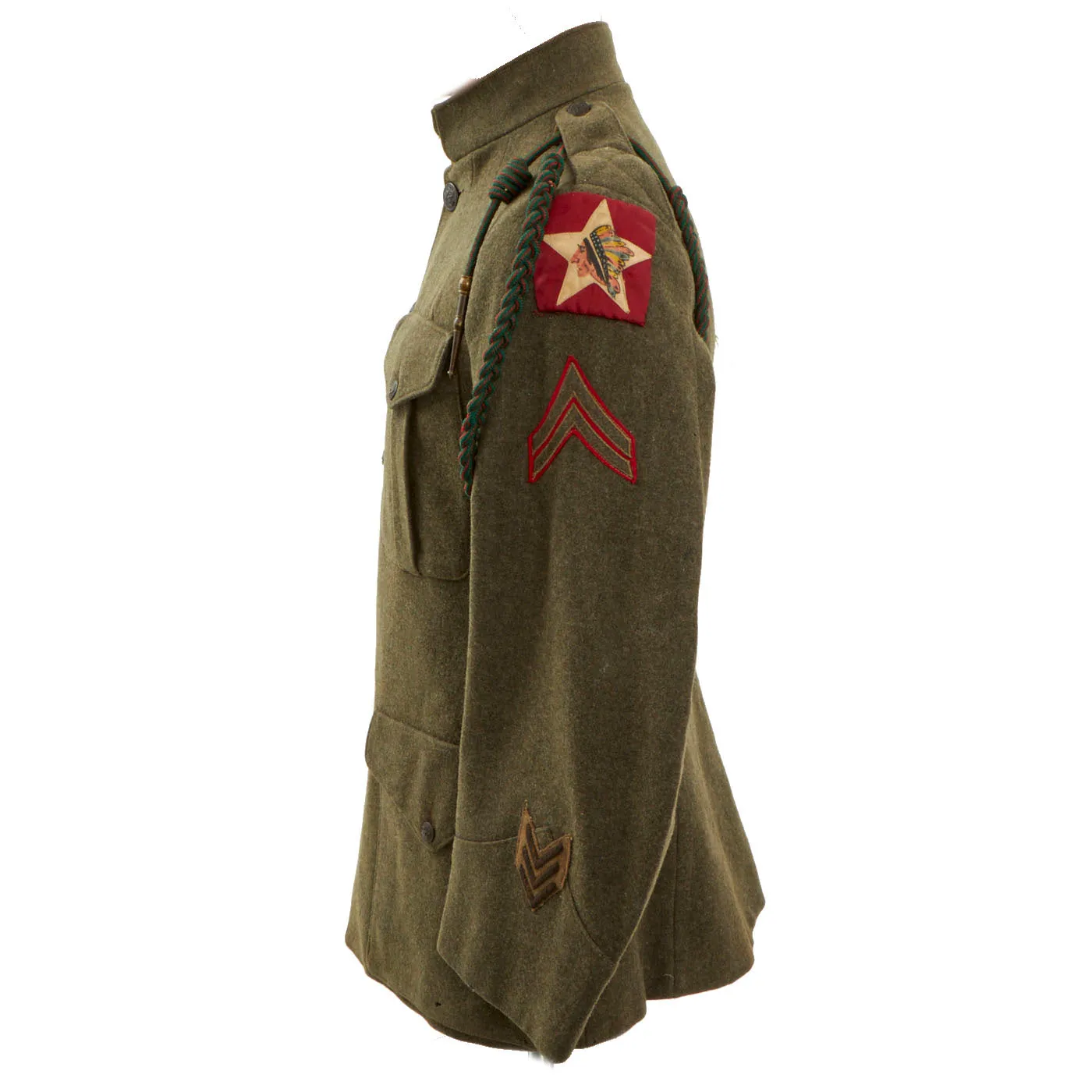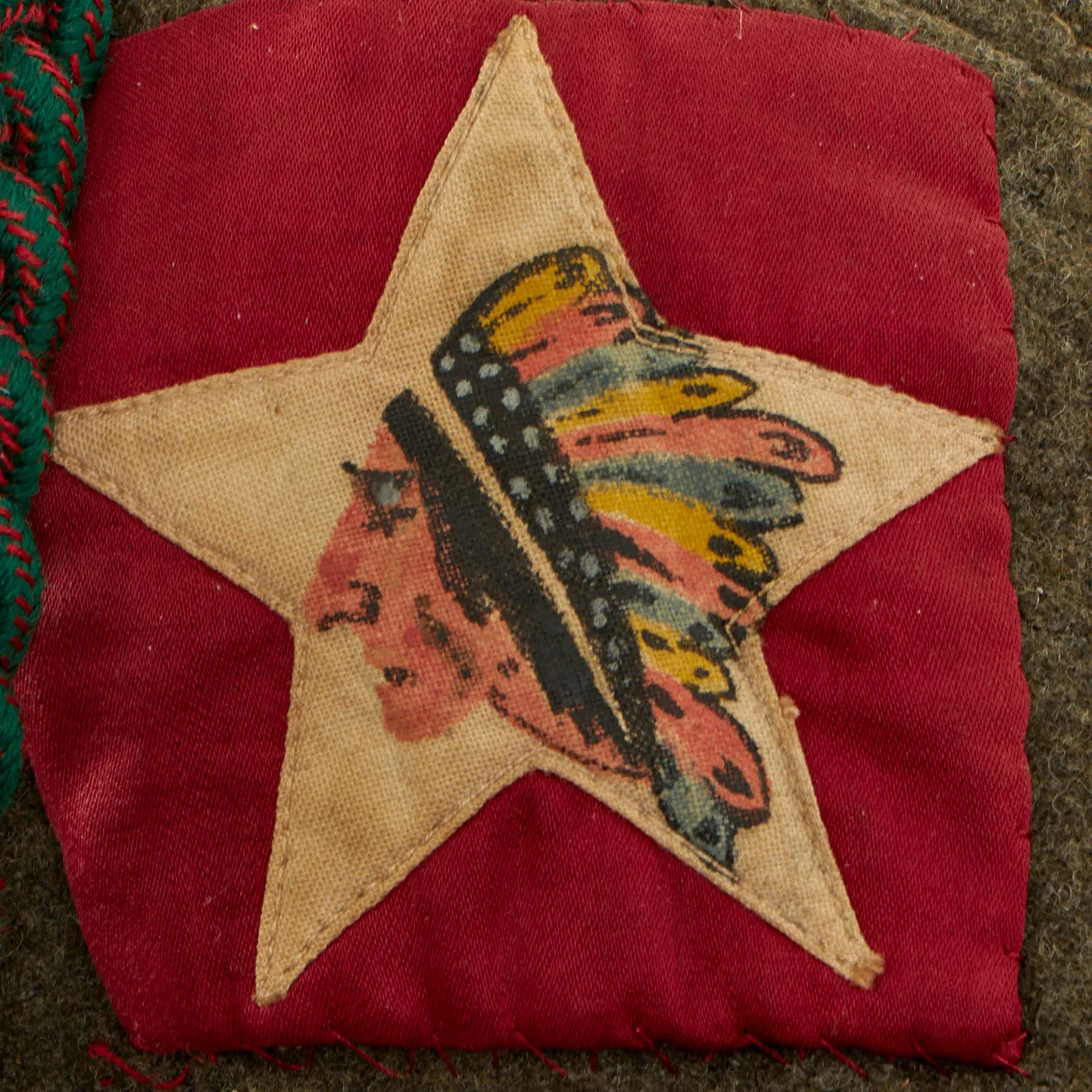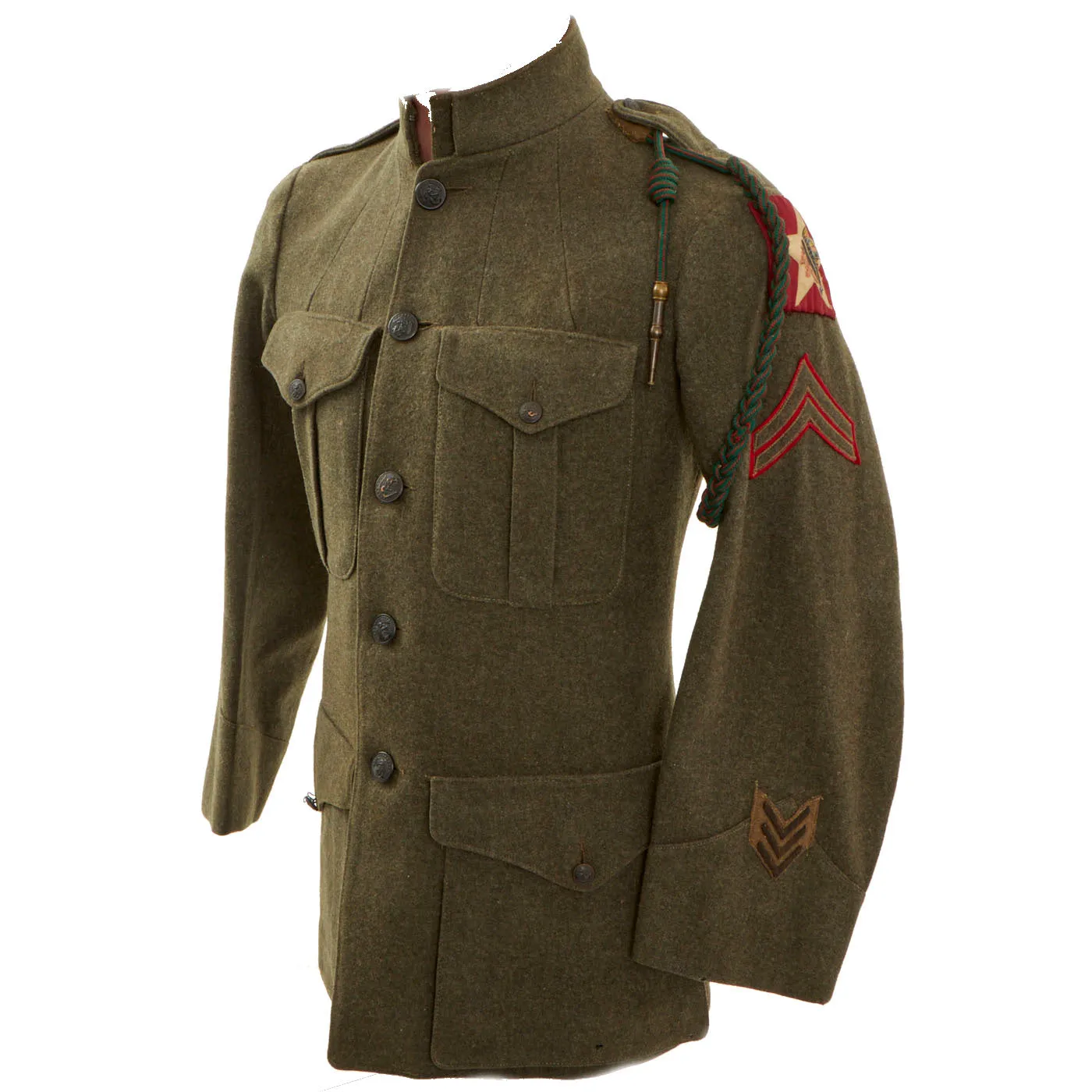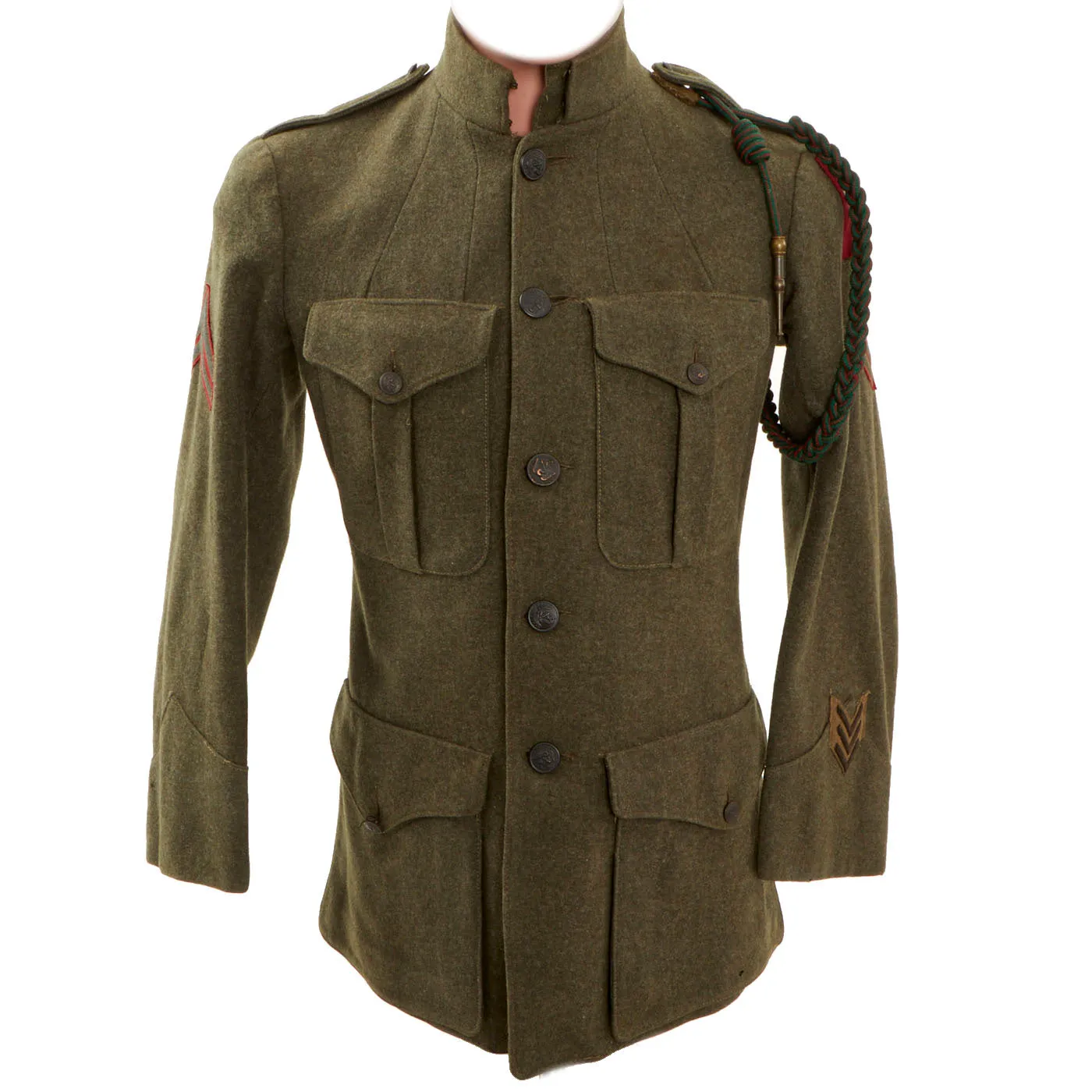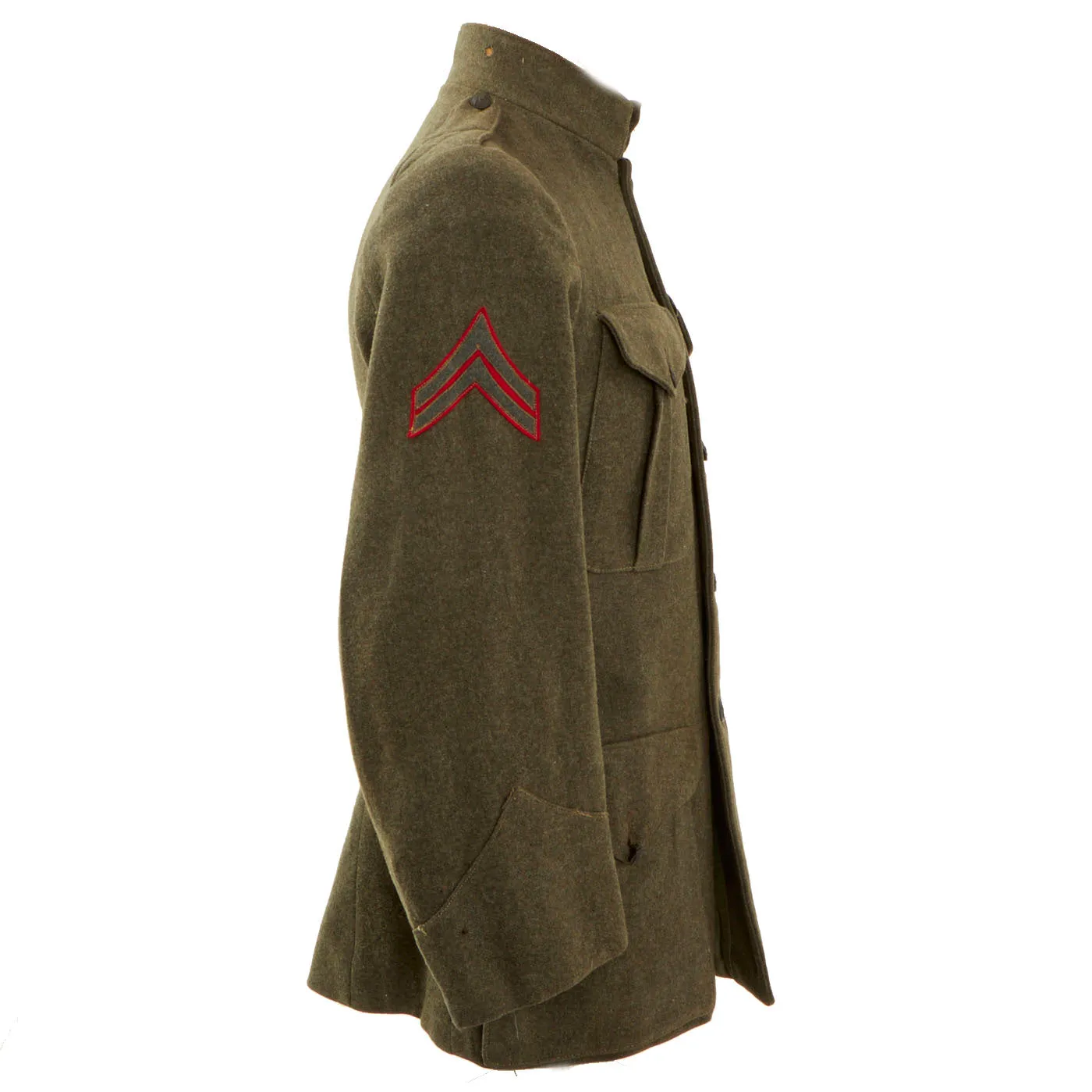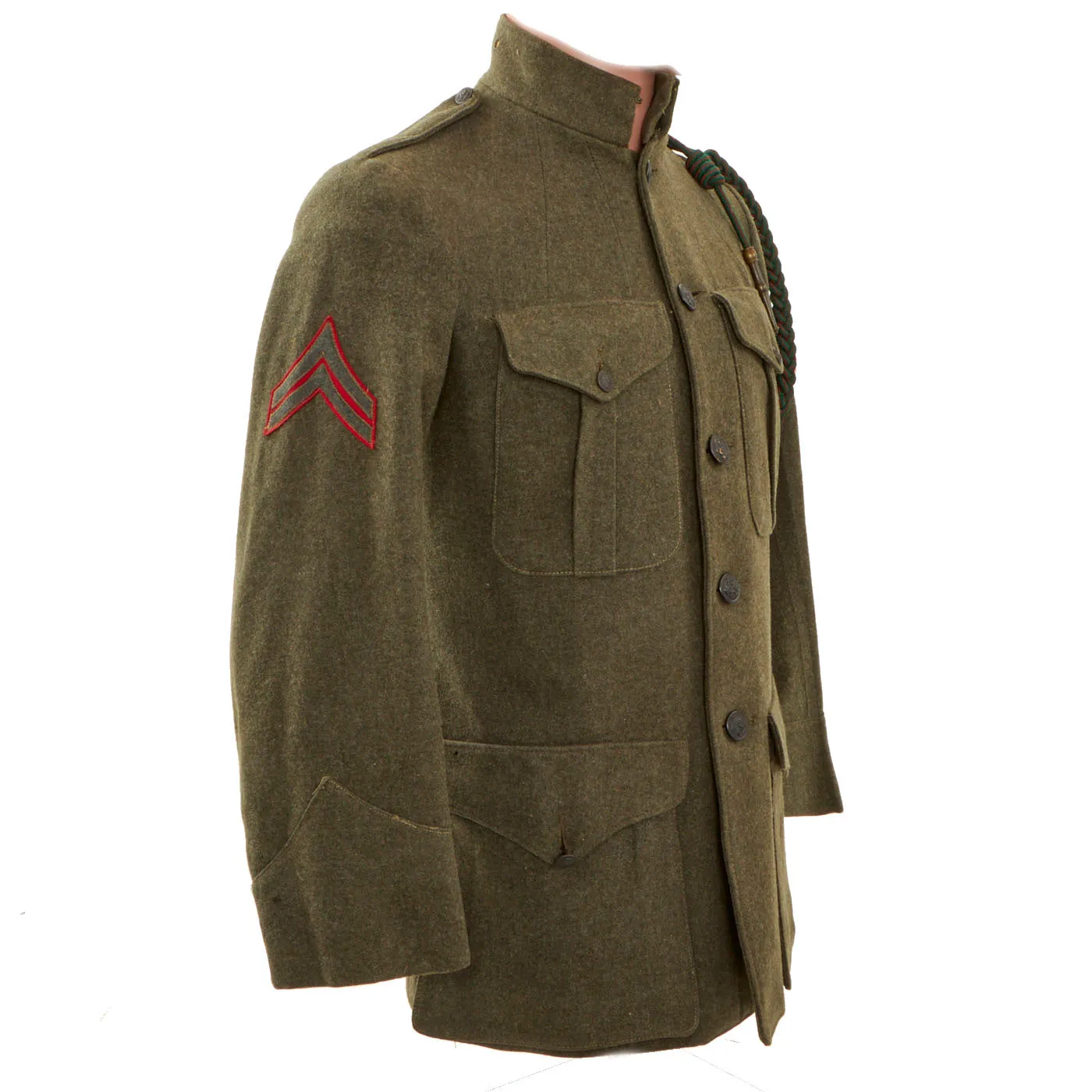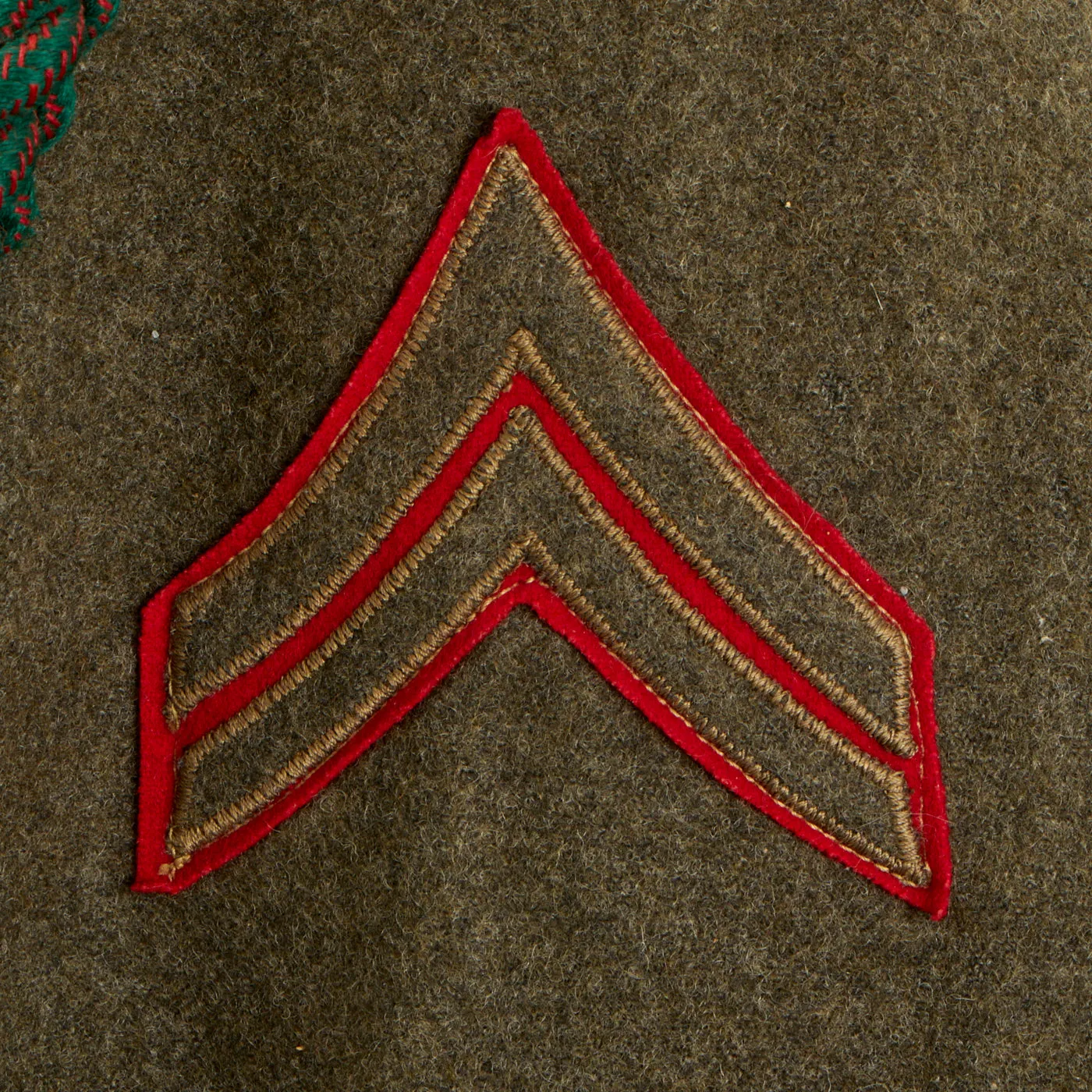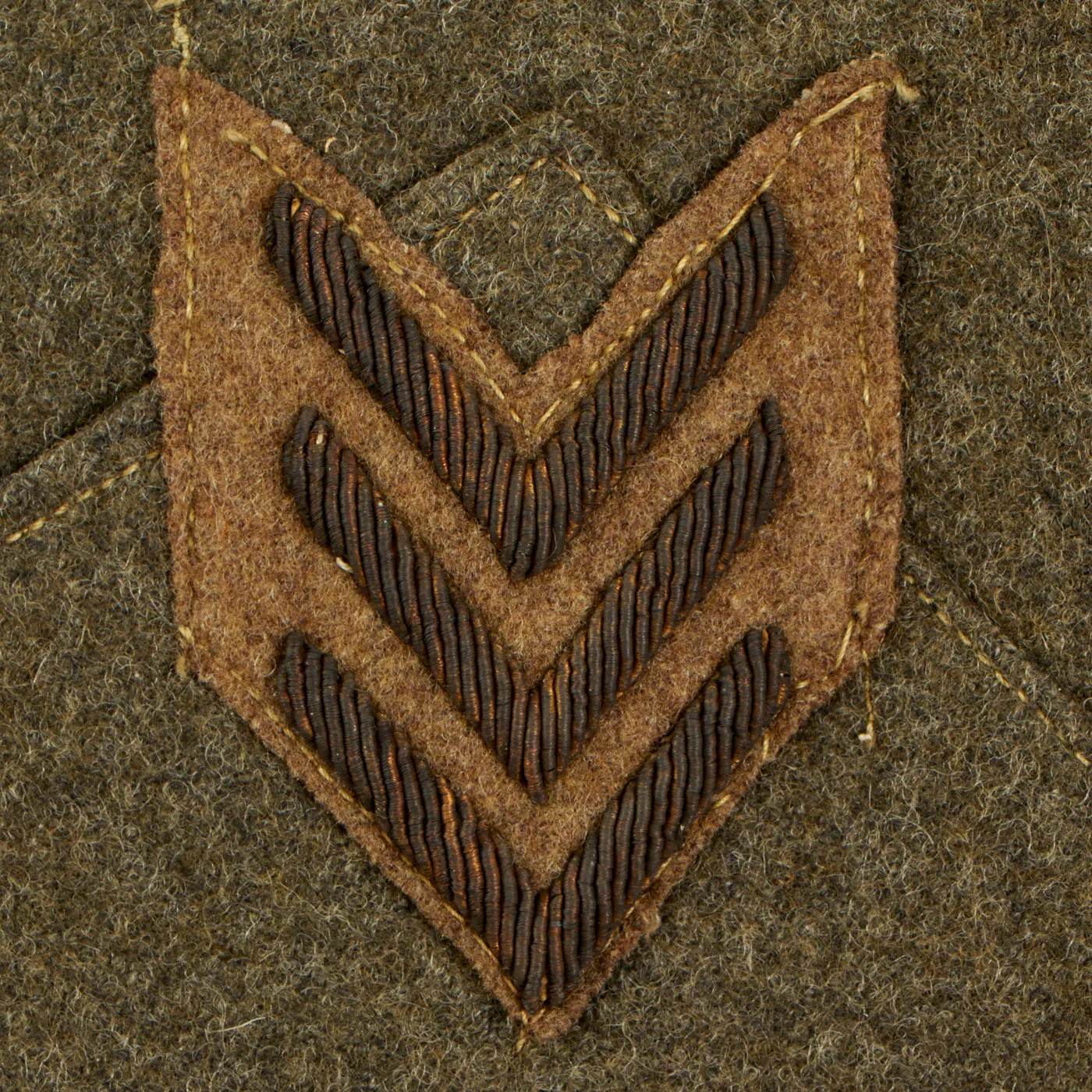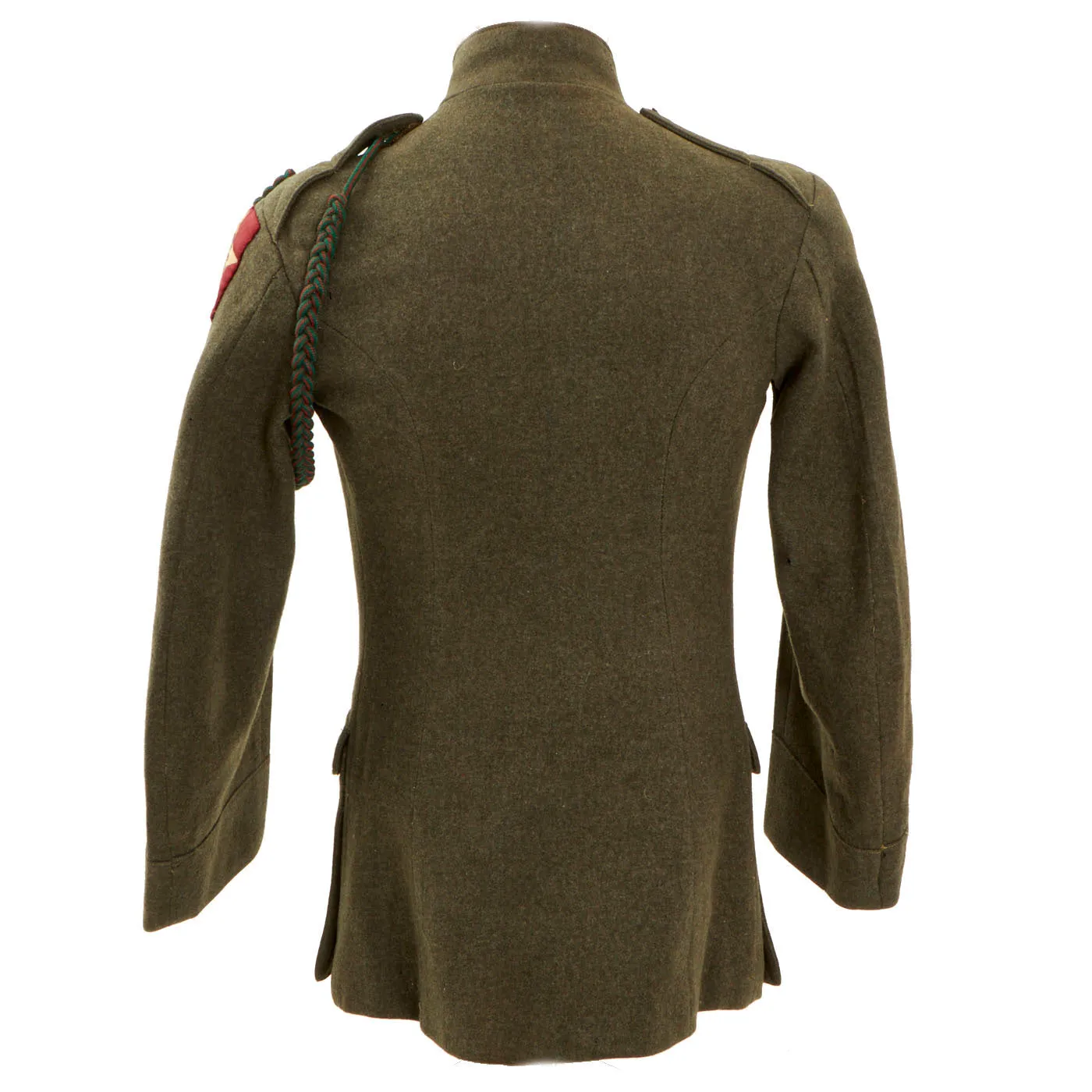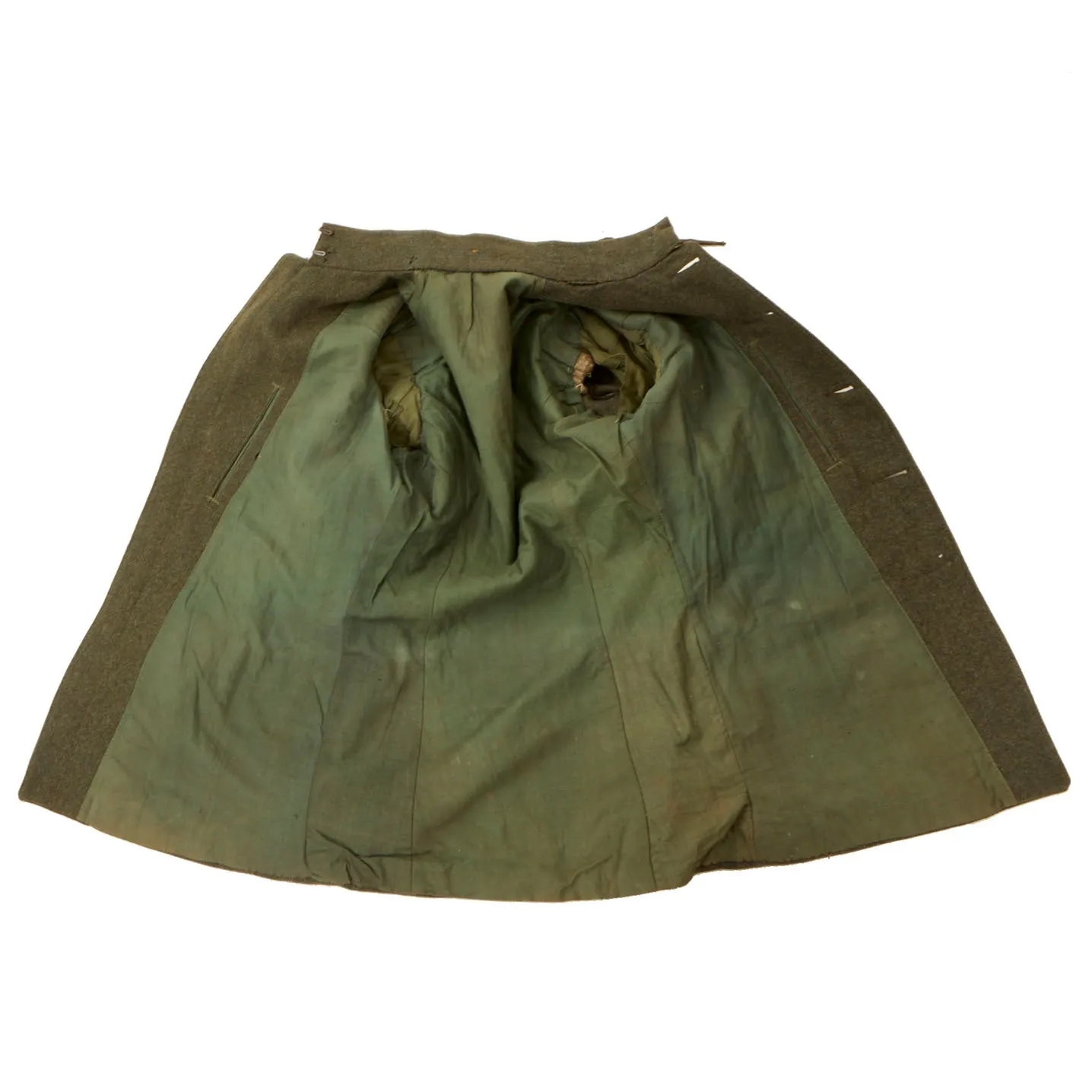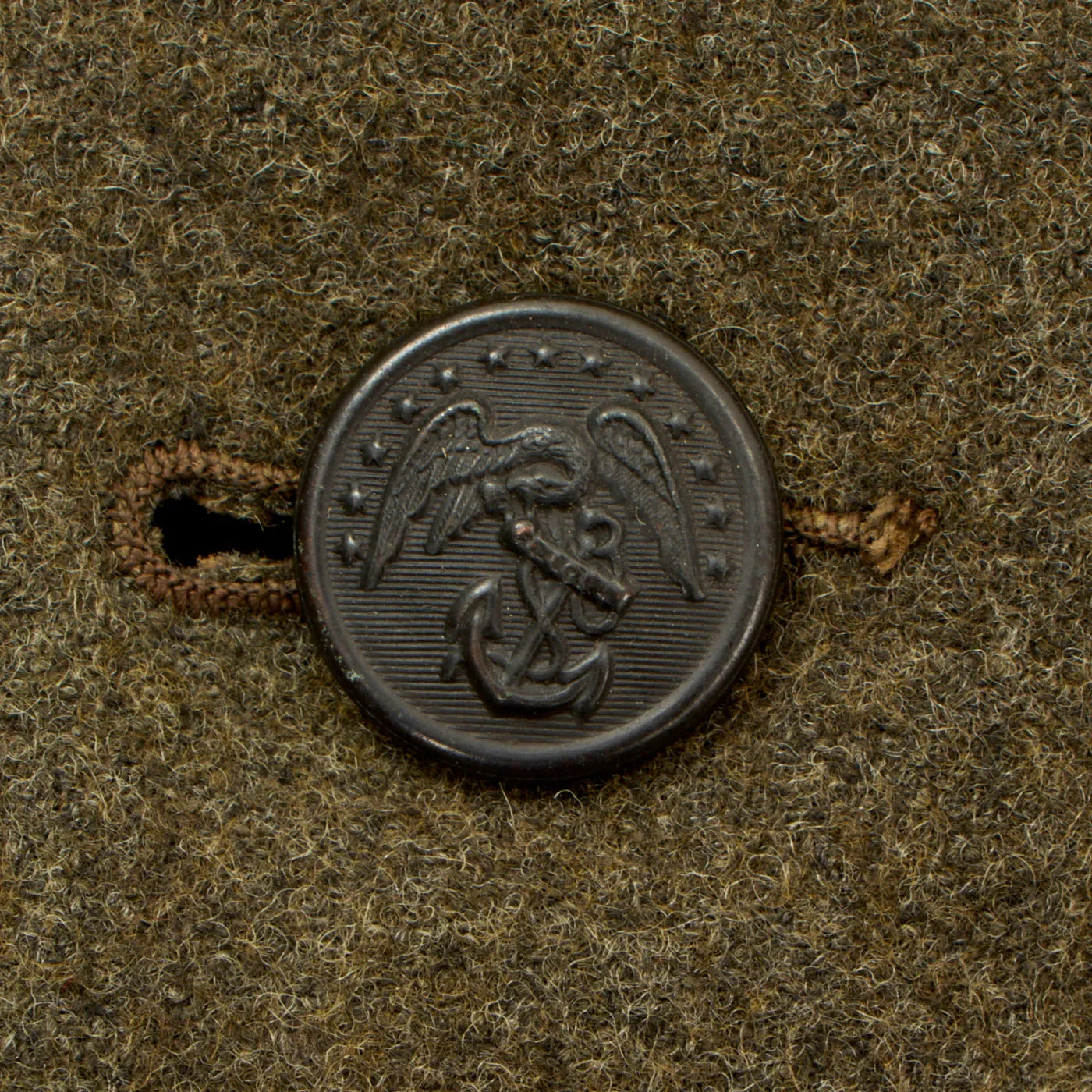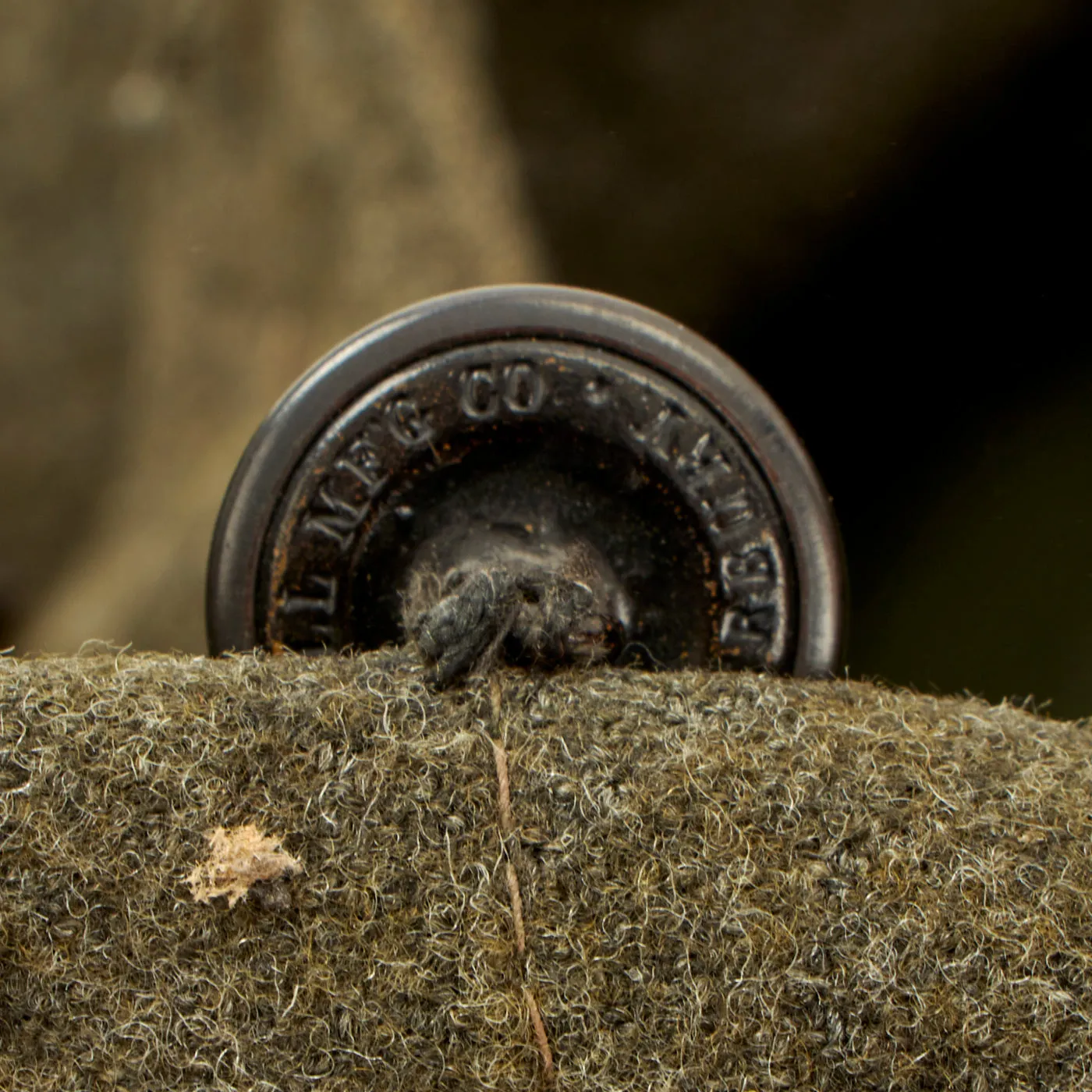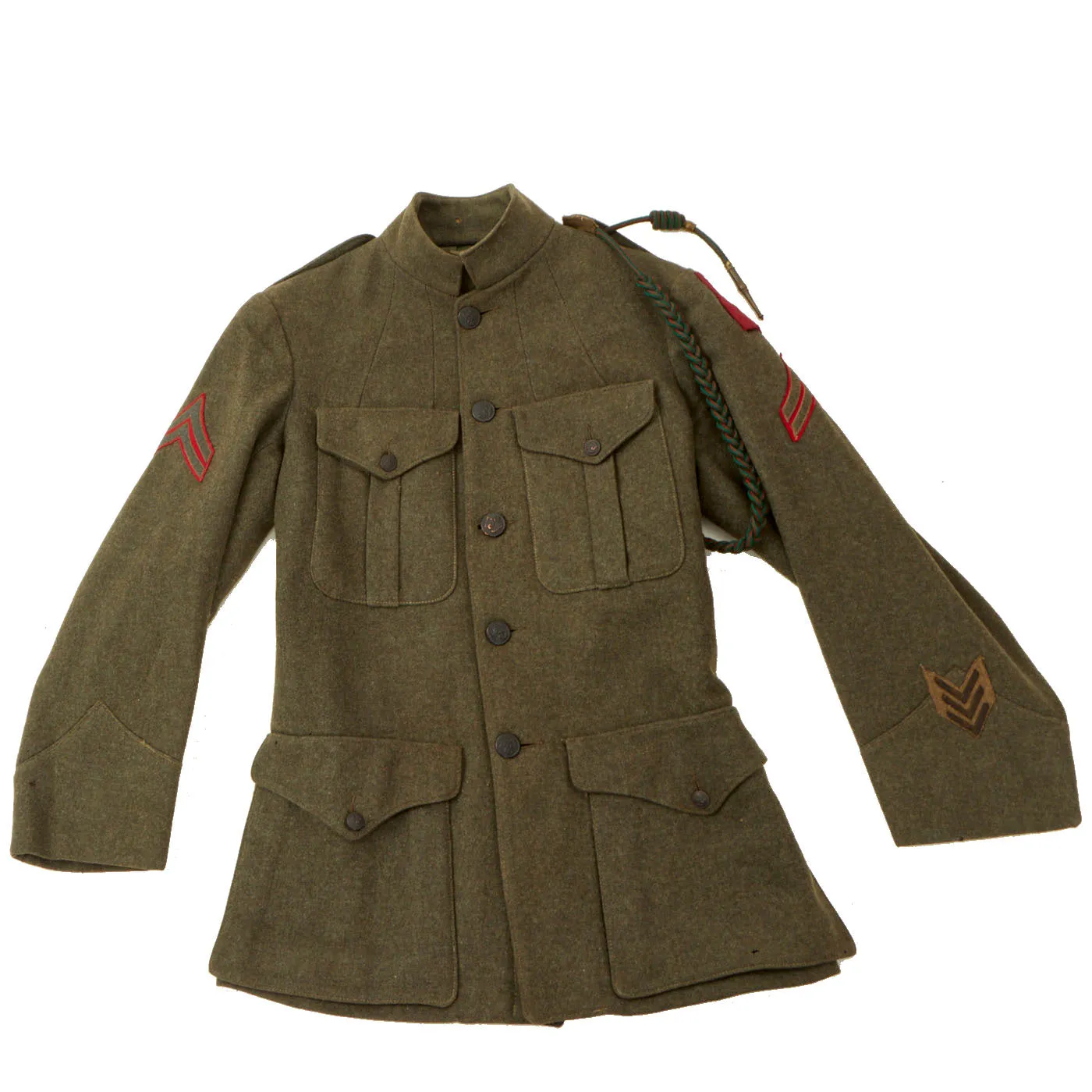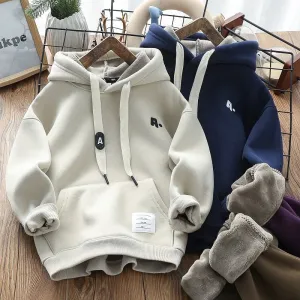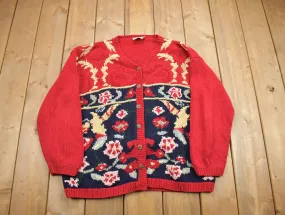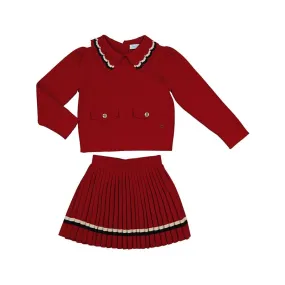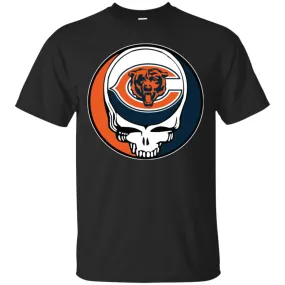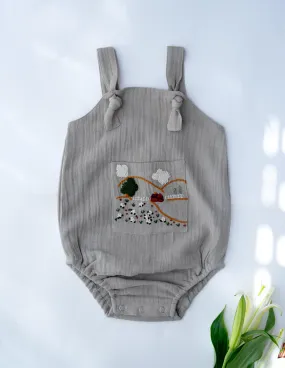Original Item: Only One Available. This is a hard to find example of a patched United States Marine Corps Service Alphas green wool coat. This is a beautiful patched example featuring a rare 1st Battalion 5th Marines patch! WW1 patched Marine Corps uniforms are some of the hardest items to find, and ones in this condition are even harder!
On 25 May 1917, the battalion was activated and deployed to France on 1 June 1917. 1/5 participated in the following World War I campaigns: Aisne, Aisne-Marne, St. Mihiel, Meuse-Argonne, Toulon-Troyon, Chateau-Thierry, Marabache, and Limey. 1/5 made its most notable contribution at the Battle of Belleau Wood on 6 June 1918, when it conducted the first offensive actions of the battle in seizing Hill 142. The battalion, at first with only two companies due to the other companies not being relieved in time, assaulted the open wheat fields of the hill with bayonets fixed under the fire of German machine gun and artillery fire. In a battle that claimed 325 1/5 lives, Gunnery Sergeant Ernest A. Janson became the first Marine to earn the Medal of Honor in World War I. From December 1918 to July 1919, the battalion participated in the occupation of the German Rhineland. It then re-deployed to Marine Corps Base Quantico, Virginia and deactivated in August 1919.
In July 1920 the battalion re-activated to provide security for the U.S. Mail. In March 1927, the Battalion deployed to help stabilize the government of Nicaragua against overthrow attempts by rebel forces. For the next six years, they aided the Nicaraguan government until peace was finally restored. 1/5 was deactivated in January 1933. Shortly thereafter the battalion was re-activated in September 1934 in Quantico, Virginia and served in the Caribbean theater until the outbreak of World War II.
This jacket features a beautiful German made “Indian Head” patch, a chief's head painted on a white star and stitched to a beautiful maroon square.
During World War 1 the Fifth and Sixth Marines fighting in France as the Fourth Marine Brigade of the Army's Second Division were forced to wear the Army's uniform. The Marines had only the eagle, globe, and anchor on their soft covers to distinguish themselves from their Army brothers in arms. As this did not sit well with the Marines, a patch was designed to distinguish them from their counterparts. A color background distinctive with the unit with one five-pointed star and an Indian head with full war bonnet were selected.
The “Indian Head” that emblazons the symbol of 1/5 is from the US Army’s 2nd Infantry Division patch, of which the 4th Marine Brigade, composed of the 5th and 6th Marine Regiments along with the 6th Machine Gun Battalion, made up half of that Division in WWI. This is the same division that John A. LeJeune famously commanded during the war. 2nd ID’s patch was proposed initially because one of the Division’s regiment’s, the 9th infantry, had gained so much fame during the Indian Wars. It was a tribute to the gallantry of their former enemy.
This Alpha coat example is in excellent condition with minor moth nips and no damage as far as we could tell. All stitching and buttons are intact, as are the cuff style collar clasps. The Indian head patch is in beautiful condition with all colors still discernible. Some of the stitching on the patch has come loose from the sleeve, but this does not take away from the beauty of it. On each shoulder there are beautiful corporal chevrons and inverted overseas chevrons/stripes on the lower left sleeve. There are 3 “stripes” denoting 18 months of overseas service. On the left shoulder is a beautiful WW2 era French Fourragere.
During World War I, the French Government awarded decorations for especially meritorious conduct in action to 156 American units varying in size from a section to a brigade. These decorations were: the Fourragère and the Croix de Guerre (Cross of War) with various combinations of palms, gilt, silver, and bronze star devices.
The unit twice decorated with the Croix de Guerre with Palms was entitled to a braided and knotted cord, known as the Fourragere, in the green and red colors of the Croix de Guerre. The Fourragere becomes part of the uniform of the unit so cited, authorizing all members of the organization to wear the decoration on the left shoulder of the uniform as long as they remain members of the organization.
This is truly an amazing uniform, with an even more amazing 1/5 patch, and that’s coming from a 6th Marines veteran! Uniforms of this caliber are becoming increasingly difficult to find and the value on these increase almost weekly. Comes ready to display! Semper Fi Marines, Teufelhunden!
Devil Dog
We got our nickname “Devil Dogs” from official German reports which called the Marines at Belleau Wood Teufel Hunden. It has been said that this nickname came about from Marines being ordered to take a hill occupied by German forces while wearing gas masks as a precaution against German mustard gas. While the Marines fought their way up the hill, the heat caused them to sweat profusely, foam at the mouth and turned their eyes bloodshot, and at some points the hill was so steep it caused the Marines to climb up it on all fours. From the Germans' vantage point, they witnessed a pack of tenacious, growling figures wearing gas masks, with bloodshot eyes and mouth foam seeping from the sides, advancing up the hill, sometimes on all fours, killing everything in their way. As the legend goes, the German soldiers, upon seeing this spectacle, began to yell that they were being attacked by "dogs from hell."




